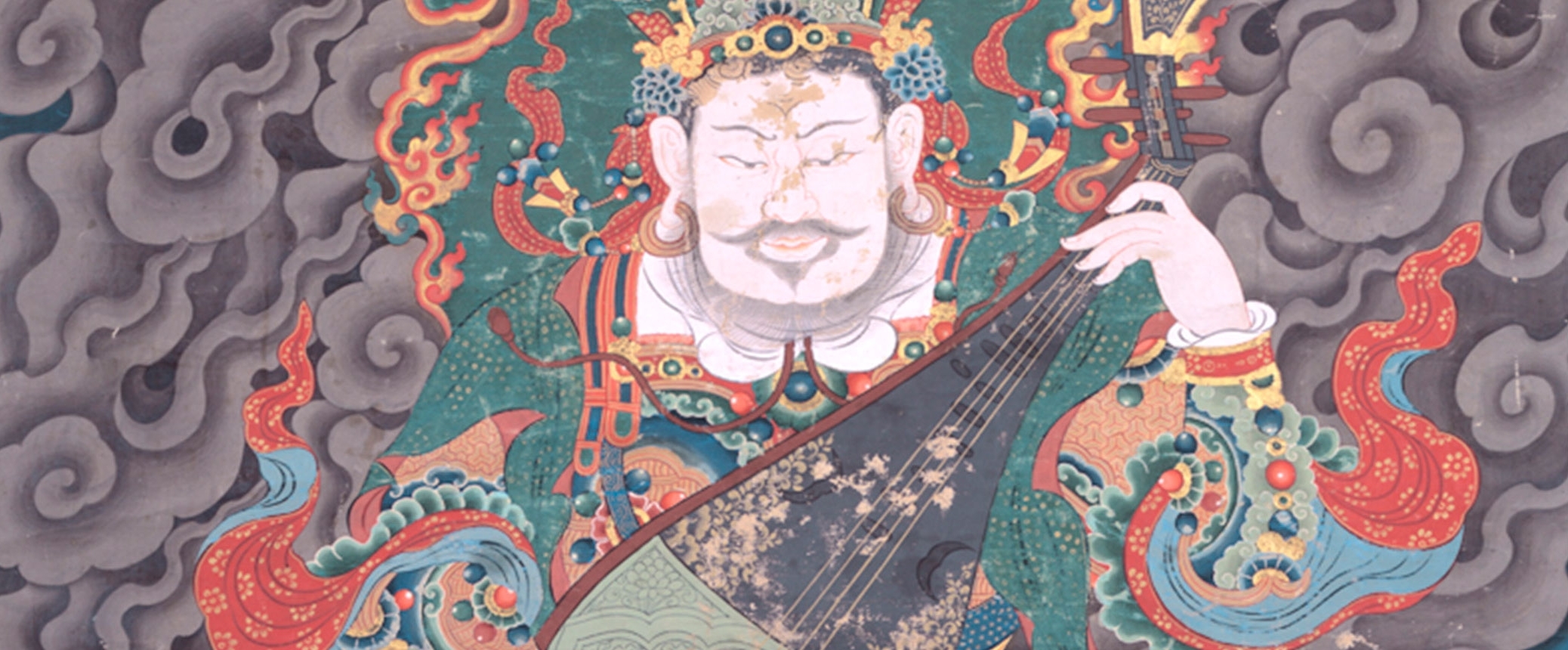
Tibet’s culture is built on indigenous traditions infused with foreign ideas. By the 14th century, Chinese art and luxury goods were pouring into Tibet as a result of political ties with the Mongol emperors of China. While Tibetan artists had already been exposed to arts from their northern neighbor, this massive influx had a profound effect on the development of Tibetan painting. Arhat painting, a genre introduced to Tibet from China during this period, is an ideal lens through which we can observe this artistic interaction and the distinctly Tibetan visual vocabulary that emerged from it. The sixteen Arhats are believed to be either the actual disciples of the historical Buddha or later devout followers of his teachings. Both traditions honor the Arhats as fully realized preservers and transmitters of Buddhist wisdom who, through their intensive meditation, have gained supernatural abilities and even, in some cases, immortality. They are believed to dwell on Earth in hidden realms, appearing on occasion to devotees in need. The conventions of the Arhat genre came to Tibet through Chinese paintings along with other artistic techniques and ideas. In both Chinese and Tibetan Arhat paintings, the figures are portrayed as either idealized monks or as grotesque sages, caricatured as foreigners and gnarled ascetics. Tibetan artists embraced Chinese ideas and combined them with distinctly Tibetan innovations, and their high level of skill, sophistication, and creativity is the focus of this exhibition.
Plan your visit
Send Your Comments
Comments are moderated, and will not appear on this site until the Rubin has approved them.

